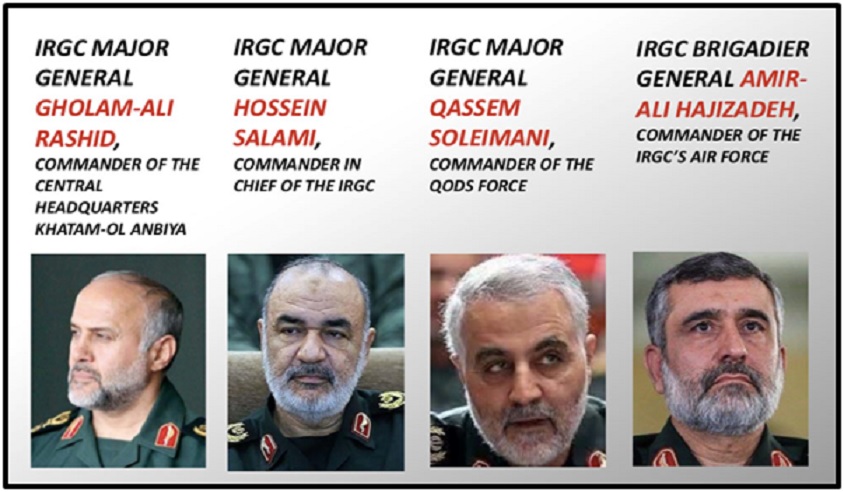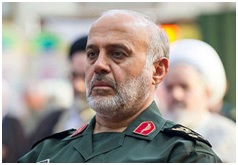Written by Staff Writer | September 30, 2019
DETAILS ON DECISION MAKING PROCESS, COMMAND CHAIN, AND TIMELINE OF
IRGC ACTIONS
Ali Khamenei, supreme leader of the regime, directly ordered the commanders of the operation to conduct the attack.
September 30, 2019
Summary
The People’s Mojahedin Organization of Iran (PMOI/MEK) – the pivotal member organization of the National Council of Resistance of Iran (NCRI) – has obtained exclusive and top secret information sourced from inside the Iranian regime detailing the missile and drone attack carried out by the Iranian regime against the oil facilities of Saudi Arabia in Abqaiq and Khurais on September 14, 2019.
These Intelligence reports indicate that the operation resulting in the attack involved the highest levels of the IRGC who directed it at every step. Ali Khamenei, supreme leader of the regime, directly ordered the commanders of the operation to conduct the attack, and the tactical command headquarters for the operation deployed from Tehran to Khuzestan province (southwest Iran) one week prior to the attack. The missiles used in the attack were Ya-Ali(1) cruise missiles, nicknamed Anti-Ali missiles by the Iranian people, and Thamen-ol A’emeh Industries situated in Parchin, Tehran, produced them.
(1) Ali refers to Imam Ali ibn-Abi Taleb, the first Shiite Imam.
“Intelligence reports indicate that the operation resulting in the attack involved the highest levels of the IRGC who directed it at every step.”
Detailed Timeline of Attack Operation
Below are selected details relevant to the Iranian regime’s attack on Saudi Arabia
(ARAMCO) in Abqaiq and Khurais on September 14, 2019:
- The Supreme National Security Council (SNSC) of the Iranian regime approved a plan for an attack against Saudi Arabian oil facilities in a session on Wednesday, July 31, 2019 presided over by the Iranian regime’s president, Hassan Rouhani, The regime’s foreign minister, Mohammad Javad Zarif is also a regular member of the SNSC and attends its sessions. Several of the IRGC commanders who have been confirmed by intelligence reports to have been present in the meeting were:
- IRGC Major General Gholam-Ali Rashid, commander of the central headquarters Khatam-ol Anbiya (highest operational military headquarters in Iran, in charge of operational coordination between all of the regime’s armed forces including the IRGC and the regular armed forces)
- IRGC Major General Hossein Salami, commander in chief of the IRGC
- IRGC Major General Qassem Soleimani, commander of the Qods Force
- IRGC Brigadier General Amir-Ali Hajizadeh, commander of the IRGC’s air force Rashid and Hajizadeh are not regular members of the SNSC and participated in this session especially for the purpose at hand.
In addition to the above list, several other commanders of the Armed Forces and the Law Enforcement Force (Iranian regime’s police force) participated in the SNSC session.
- After Khamenei’s initial approval of this operation, detailed planning began and the SNSC referred the plan to Khamenei for final approval. Khamenei ordered IRGC Major General Rashid and Brigadier General Hajizadeh to begin the operational implementation of the plan.
- IRGC Brigadier General Mohammad Fallah, operational deputy commander of the IRGC air force, took the lead in implementing the operation. This operational headquarters is situated in Dastvareh base (in Chitagar region of northwest Tehran).

- IRGC Major General Gholam-Ali Rashid, commander of the central headquarters Khatam-ol Anbiya, reviewed and approved the final operational plan.
- The commanders of the operation from the IRGC air force deployed from Tehran to Khuzestan province in southwest Iran on September 7, a week prior to the attack. Some of the commanders of this operation have been identified and are named here:
- IRGC Brigadier General Mohammad Fallah, operational deputy commander of the IRGC air force
- IRGC Brigadier General Mahmoud Bagheri Kazemabad(2), commander of the IRGC air force’s missile forces
- IRGC Brigadier General Saeed Aghajani, commander of the IRGC air force’s drone forces
(2) Mahmoud Bagheri Kazemabad has been designated by the Treasury Department of the United States Government, OFAC’s SDN list, May 22, 2018
- This squad of commanders set up headquarters in a part of Omidiyeh base near Ahvaz (situated between the cities of Omidiyeh and Ahvaz in Khuzestan province, about 85 kilometers southeast of Ahvaz).
- Omidiyeh base that was previously the regular air force’s fifth interceptor base was used as the tactical operational base for this operation (attack on Saudi Arabia’s oil facilities).
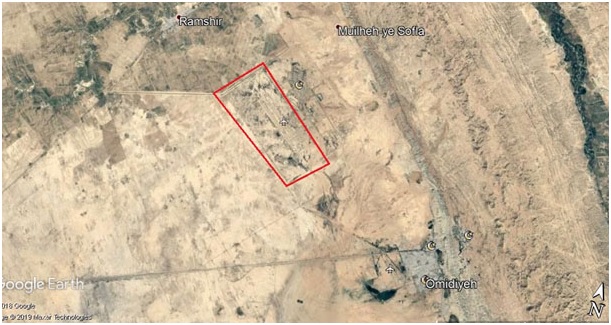
A section of this base is used by the IRGC air force and is commanded by IRGC commander Amiri. The regular armed forces southwestern air defenses are situated in Omidiyeh and units of the regular army air defense and air force are stationed in the base. The presence of regular army units in the base provided a suitable cover for concealing the presence of IRGC forces in this operation.
- Another group of IRGC commanders and personnel with expertise in missiles and drones transferred from the IRGC’s third naval region in Mahshahr (119 kilometers south of Ahvaz) to the Omidiyeh base to participate in this operation.
- A few days after the IRGC air force’s missile and drone unit carried out the attack on September 14, 2019, the operational commanders reported in detail to IRGC Major General Gholam-Ali Rashid, commander of the central headquarters Khatam- ol Anbi
- The group of personnel that had transferred from Mahshahr to Omidiyeh for the operation, returned to their base in Mahshahr a few days after the operation. Some of these personnel, however, remained in Omidiyeh
- Based on the latest reports received from inside Iran, a new squad from the IRGC air force from Tehran has entered Omidiyeh base on Sunday, September 22. There is no information on their orders yet.
Details of Missiles Used in Attack
IRGC Cruise Missile Production
The IRGC has devoted part of its missile production capacity to manufacturing of cruise missiles. These missiles are produced by cruise industries group named Thamen-ol A’emeh Industries situated in Parchin, Tehran. Factories operating under this group are:
- Fasihi Industries
- Moslemi Industries
- Rahimi Industries
The group has a research facility for cruise missile production. (Appendix 1 –
Aerospace Industries Organization Chart)
Parchin
Parchin is a large sprawling military complex in southeast of Tehran under the control of the defense ministry. Twelve military and missile industries are located within Parchin, each of which the defense ministry has codenamed as “plan”, from plan 1 to plan 12.
According to specific information, the Ya-Ali cruise missiles used in the attack on the
Saudi Aramco oil facilities were produced in Plan 4 of Parchin.
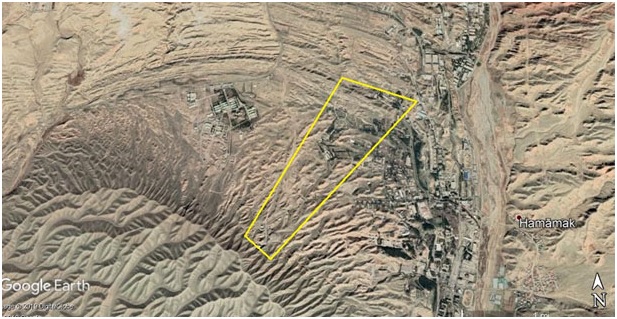
North Korean Assistance
The Iranian regime has sent a group of its missile experts to North Korea in past years to learn how to produce cruise missiles. In 2009, a group of twenty experts was dispatched to North Korea. The head of the group was Hossein Pourfarzaneh, an expert in the production of turbojet engines. Pourfarzaneh is currently heading the “Presidential Scientific Technology Industries” in the field of turbojet engines.
Missile Centers in Southern Iran
Missile Production Facilities
Iran’s southern coastal provinces (on the Persian Gulf coast) comprise the most important sites of the IRGC’s production and stockpiling of missiles. These centers and sites are all under the control of the IRGC air force and missile command. The IRGC navy’s engineering corps have primarily constructed these centers and sites.
Nine of the centers and secret stockpiling sites of these missiles are listed below
(details of these sites are included in Appendices below)
Fajr 5 Tunnel – Production and Stockpile of Missiles
Fajr 5 tunnel is one of the most important secret facilities of the IRGC navy for the production and stockpiling of missiles. It is situated in Beheshti base in the Beiza region to the north of Shiraz in Fars province. The base is the logistical center of the IRGC navy. The base houses a tunnel complex and adjoining facilities for the production and stockpiling of the IRGC’s missiles. IRGC engineering corps have also built missile launch pads in the protected area adjacent to the base (Appendix 2 and 3).
Be’asat 1 Base (a.k.a. Imam Mohammad Bagher base)
Location: North of Shiraz, Kilometer 5 of Shiraz to Marvdasht road, east of the road, after Roknabad town (formerly Akbarabad)
Mission: Production and Stockpiling of IRGC Navy missiles among other activities
Description: The facility consists of three bases situated alongside one another. The total length of the facility is 7 kilometers. Ammunition depots constructed by IRGC engineering corps to hold missiles are situated at the northern end of the facility as well as missile launch pads.
(Appendix 4)
Be’asat 2 Base
Location: North of Shiraz, Kilometer 12 of Shiraz to Marvdasht road, in a canyon to the west of the road
Mission: Command HQ and Production and Stockpiling of IRGC Navy missiles Description: The facility has an extensive tunnel network and other facilities. (Appendix 5)
Cheshmeh Bidi East Base
Location: North of Shiraz, Kilometer 10 of Shiraz to Marvdasht road, east of the road
Mission: Stockpiling and Launch Site of IRGC Navy missiles
(Appendix 6)
Kazeroun Missile Center
Location: Northeast of Kazeroun, adjacent to Imam Sajjad Brigade Special Forces base of the IRGC Navy,
Mission: Stockpiling and Launch Site of IRGC Navy missiles
Description: Imam Sajjad Special Forces brigade of the IRGC Navy that is assigned to
Abu Mousa Island in the Persian Gulf has a base adjacent to the Army’s Seventh Base. (Appendix 7)
Missile Tunnel east of Lar town
Location: Six kilometers east of Lar town in a mountainous region
Mission: Stockpiling and Launch Site of ballistic missiles
Description: There is a sprawling tunnel complex and underground facilities in this location. It is highly protected and secured. Mobile phone signals are blocked in the area close to the tunnel. The regime has often mentioned this tunnel in its propaganda as its missile city.
(Appendix 8)
Borazjan Missile Tunnel of IRGC Navy
Location: Northeast of Borazjan on the road to the asphalt factory in the east of Borazjan, after the IRGC base; after passing through the IRGC base the road extends about 5 kilometers to the tunnel entrance.
Mission: A main site in production and stockpiling of missiles for the IRGC Navy. Description: The tunnel is 300 meters in length.
(Appendix 9 and 10)
Missile Center in Imam Hassan Port
Location: In Imam Hassan Port, opposite fuel storage tanks, missile launch pads on the other side of the road
Mission: Secret Missile Launch facility.
Description: The fuel storage tanks provide cover for the site. They have built the tanks with concrete and underground.
(Appendix 11)
Qeshm Missile Center
Location: Near the coastline of Qeshm Island and Port Mosen Base – Underground facilities
Mission: Underground warehouse for stockpiling missiles of the IRGC Navy
Description: The underground facility has five layers of concrete and earth to neutralize any possible bombing. The IRGC has used this facility to export missiles to Yemen and Lebanon in the past.
(Appendix 12 and 13)
In addition to the above tunnels and centers, the Iranian regime has other tunnel and underground facilities in southern Iran, including in Asaloyeh, Jam, Bandar Abbas, Gotvand County Khuzestan, Abu Musa Island, Greater Tunb and Lesser Tunb Islands, and Minab.
Conclusion
The simultaneous missile and drone attack on Saudi Arabia’s oil facilities on September
14, 2019 emanated from inside Iran and was a blatant act of war that Khamenei, Rouhani, Zarif, and other regime heads were responsible for in deciding, approving, and implementing.
The regime hopelessly tries to prevent a popular uprising and thwart the expansion of resistance units by using internal suppression and external sponsorship of terrorism. It seeks to contain the deep-seated anger of society at its disastrous and inhuman rule.
It is quite telling that according to numerous reports from inside the IRGC, all IRGC forces were on full alert during and after the attack. IRGC units implemented suppressive maneuvers to intimidate Iranians in various cities and to fend off the threat to their rule that they see in a popular uprising inside Iran as their main concern.
The regime is counting on inaction of the international community in its aggression. As long as this regime exists, it will not cease its aggression. The lasting solution for ending religious fascism as the source of all the crises in the Middle East is for the Iranian people to change this illegitimate regime with their popular uprising and with Iran’s organized resistance movement.
We call for the below concrete steps
- Previous United Nations Security Council resolutions on the mullahs’ nuclear weapons project and the ban on enrichment must be reinstated.
- Eviction of the regime, its Revolutionary Guards and mercenary militias from Iraq, Syria, Yemen, Lebanon and Afghanistan is an urgent imperative.
- The European Union must place Khamenei, his offices, the IRGC and the Ministry of Intelligence and Security (MOIS) on the terrorist watch list.
- The UN Security Council must refer the clerical regime’s dossier on human rights abuses and atrocities, especially the 1988 massacre of 30,000 political prisoners to an international court.
- The world community must recognize the right of the Iranian people’s Resistance to overthrow the ruling theocracy and attain freedom
Appendices
- Aerospace Industries Organization
- Fajr 5 Tunnel
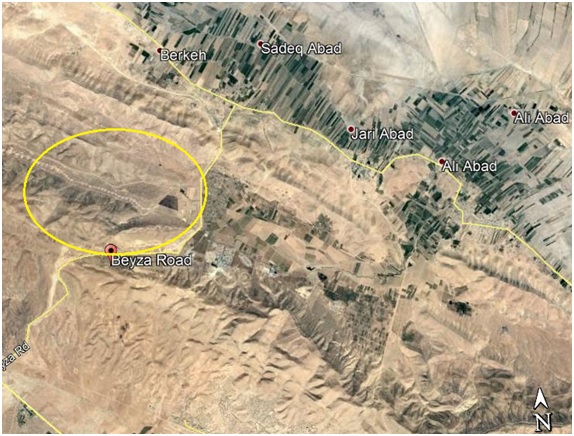
- Fajr 5 Tunnel
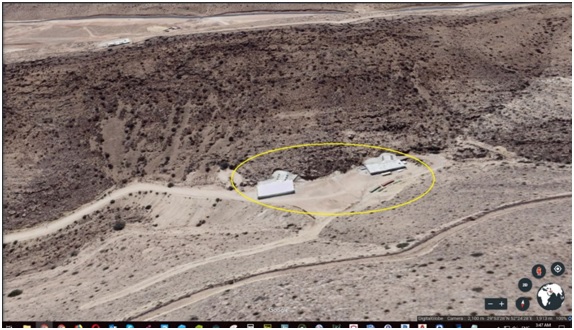
- Be’asat 1 Base
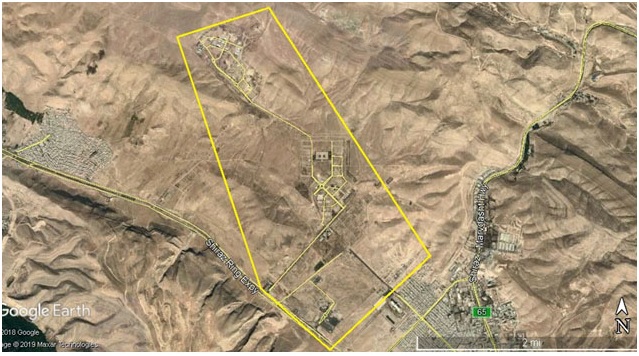
- Be’asat 2 Base
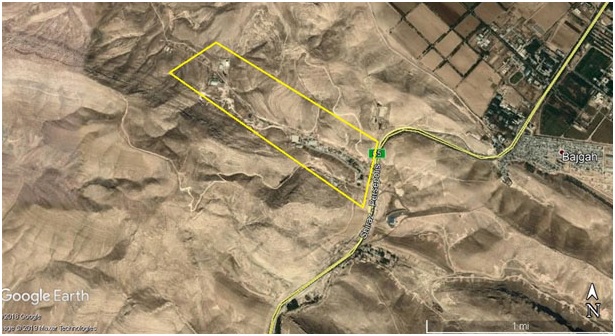
- Cheshmeh Bidi East Base
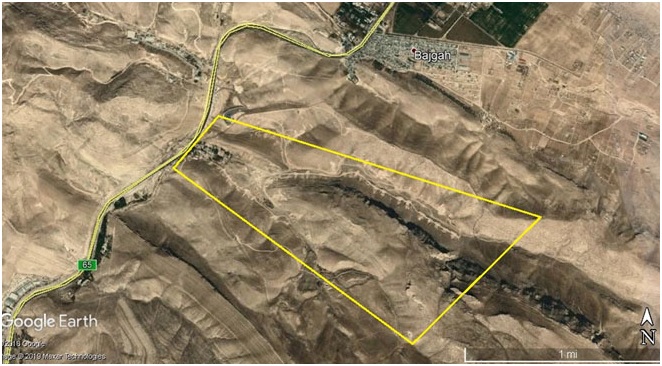
- Kazeroun Missile Center

- Missile Tunnel east of Lar town

- Borazjan Missile Tunnel of IRGC Navy
Satellite image of Borazjan Missile Tunnel of IRGC Navy
- Borazjan Missile Tunnel of IRGC Navy
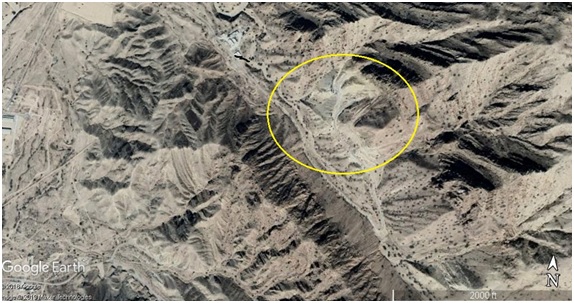
- Missile Center in Imam Hassan Port
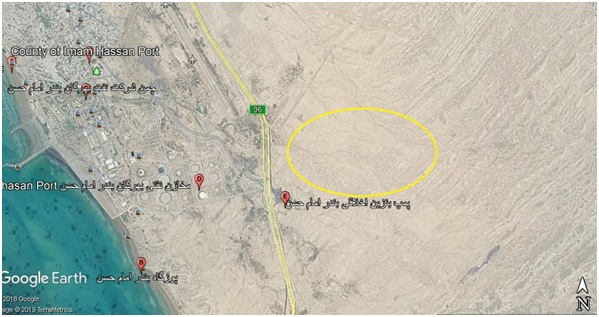
- Qeshm Missile Center

- Qeshm Missile Center
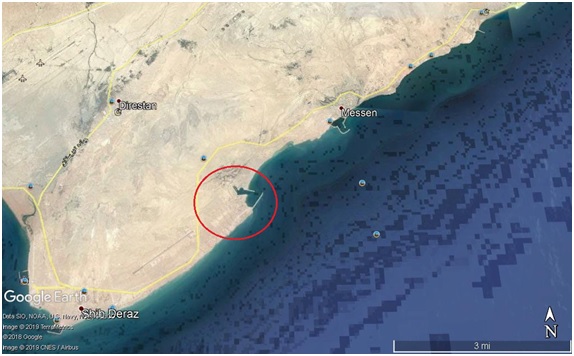
- Missile Command in Tehran and Tactical HQ of Attack on Saudi Aramco Oil Facilities in Omidiyeh and Iranian Regime’s Missile Centers in Southern Iran
Annexes
- Chain of Command in Attack on Saudi Oil Facilities
2: Central Headquarters Khatam-ol Anbiya
Mission
Central Headquarters Khatam-ol Anbiya is the highest level of operational command in the Iranian regime’s armed forces. Ali Khamenei appointed IRGC Major General Gholam-Ali Rashid to command this headquarters on July 5, 2016. Rashid reports directly to Khamenei as the commander in chief of all of the regime’s armed forces and services.
This headquarters commands, plans for and coordinates various formations of the regular army and the IRGC and the Law Enforcement Force and other armed forces of the Iranian regime in time of war and during operations. The highest wartime commander of the Iranian regime therefore will be IRGC Major General Gholam-Ali Rashid. The armed forces central command will be subordinate to Central Headquarters Khatam-ol Anbiya.
Goal
Ali Khamenei issued a proclamation on June 28, 2016, in which he replaced IRGC Major General Firouzabadi after 27 years as the chief of staff of the armed forces and appointed IRGC Major General Mohammad Bagheri in his place. At the same time, he appointed IRGC Major General Gholam-Ali Rashid who was Firouzabadi’s deputy as the commander of Central Headquarters Khatam-ol Anbiya. The changes reflected Khamenei’s reorganization of the armed forces at the highest level for war circumstances. A number of the regime’s highest-ranking commanders were transferred to the central headquarters after its formation.
The headquarters was first formed during the Iran-Iraq war and coordinated war operations between the regular army and the IRGC at the time.
Biography of IRGC Major General Gholam-Ali Rashid
IRGC Major General Gholam-Ali Rashid was one of the highest-ranking commanders of the regime in the Iran-Iraq war. He held the position of operational deputy of the IRGC towards the end of the war and was involved in the planning of many of the IRGC’s operations leading to the death of many troops during the war.
He has held sensitive military posts after the war. He was deputy chief of staff of the armed forces before his appointment to his current post as commander of Central Headquarters Khatam-ol Anbiya.
Rashid was the highest commander involved in the missile and drone attack on the Saudi oil facilities.
He recently visited IRGC air force units in Isfahan on June 25, 2019, praised them for the attack on the American drone in the Persian Gulf, and said, “This operation was carried out with four characteristics of precision in targeting, detailed calculations, and timely decision-making and action.” Rashid has also recently visited IRGC air force units on July 29, 2019.
- Omidiyeh Base (former fifth interceptor base)
The base is located 85 kilometers southeast of Ahvaz and about 20 kilometers northwest of Omidiyeh in Khuzestan province.
The base is 20km by 15km in area. It consists of an airport, military facilities, and living quarters and park for personnel. There are several air defense posts inside the base and dozens of airplane shelters. The base has a long landing strip constructed for heavy military cargo planes.
During the Iran-Iraq war, the base was the air force’s fifth interceptor base and considered one of the most important air bases of the regime.
Activities at the base have decreased since the end of the war. It was later transferred to the air defense command of the army in the southwestern region of the country. The commander of the southwestern air defense force is Colonel Akhtari.
The expansive base in Khuzestan has provided a good base for the operation of the tactical headquarters of the IRGC air force’s attack against Saudi oil facilities.
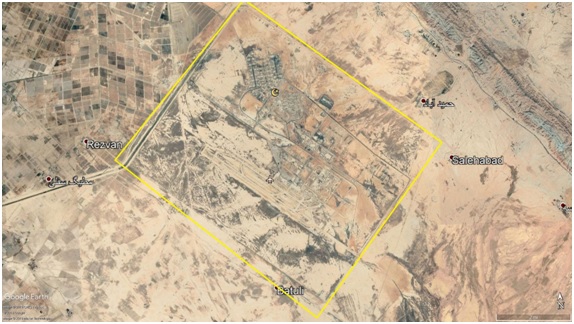
https://www.ncr-iran.org/en/terrorism


